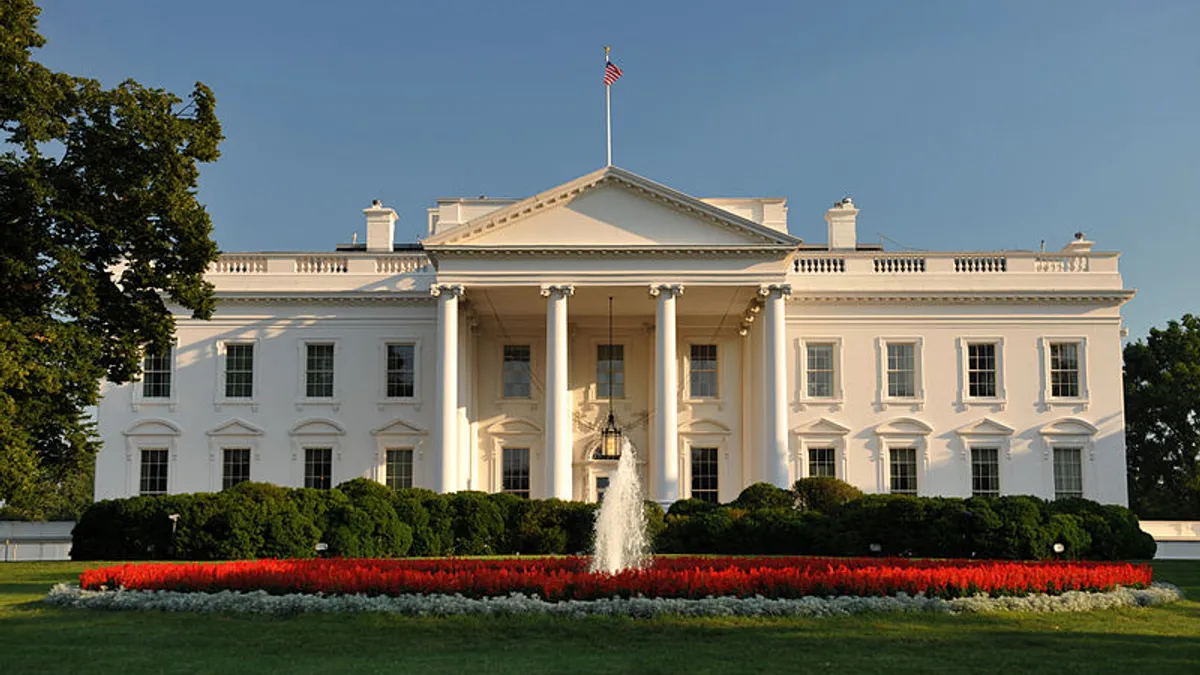Dive Brief:
- The Obama Administration yesterday announced a sweeping initiative aimed at growing energy storage, demand management and renewable energy resources, while investigating the best way to integrate those into an increasingly flexible power grid.
- The White House announced a series of executive actions and 33 state and private sector commitments expected to result in at least 1.3 GW of additional storage procurement or deployment in the next five years.
- More than a dozen developers and power companies in eight or more states have announced new storage procurement and deployment targets, totaling $130 million in new funding commitments. In total, the White House said new procurement, deployment, and investment commitments "could lead to approximately $1 billion in investments in energy storage."
Dive Insight:
Last year, the United States doubled its installed advanced energy storage capacity to 500 MW, and the White House said that "key resource" is projected to grow quickly. To aid that growth, the Obama administration announced it will host "Summit on Scaling Renewable Energy and Storage with Smart Markets," including a broad range of actions that could result in 1.3 GW of new storage being installed within the next five years.
"The summit brings together regulators, power companies, municipalities, and energy developers that are leading efforts to promote smart electricity markets and greater grid integration of renewable energy and flexible resources such as energy storage," the White House said in a fact sheet.
Among the initiatives:
- The White House Council of Economic Advisers (WHCEA) is releasing a report on the "technical and economic considerations and opportunities" relating to the grid integration of renewable energy resources;
- the federal government will boost storage and microgrid capacity through programs targeting federal installations and military bases, while funding microgrids in rural communities;
- the U.S. Department of Energy will push for standardizing and allowing greater access to energy data;
- 16 developers and power companies have announced new storage procurement and deployment targets for the next five years;
- and power companies and developers are committing to deploy smart water heaters, smart meters, and demand response programs.
A key finding from the WHCEA report is that current and projected levels of variable renewable energy resources "are opening up opportunities for technologies such as energy storage and demand response to ensure the reliable and cost-effective supply of electricity."
The White House said the analysis also shows wholesale market reforms are already helping to enable those technologies to participate in some markets, and "ongoing cost reductions and advancements in communication infrastructure are expected to further enhance the potential for these technologies going forward."
DOE’s Office of Electricity Delivery and Energy Reliability will develop an analysis of the private sector Green Button Alliance, examining consumer protections and privacy standards, aiming to "promote confidence" among customers who consent to contribute their data. And the National Renewable Energy Laboratory has developed a "sophisticated model of the Eastern Interconnection" designed to analyze how the system will operate with wind and solar power meeting 30% of needs.
NREL is expected to release the results of that study in August.
Among utility commitments, Duke Energy will deploy at least 5 MW of storage in the Asheville region of North Carolina; Consolidated Edison will partner with Siemens to analyze advanced metering data covering 4.8 million customers; and the Los Angeles Department of Water and Power plans to procure 24 MW of energy storage by 2016 and committed to 178 MW by 2021.














